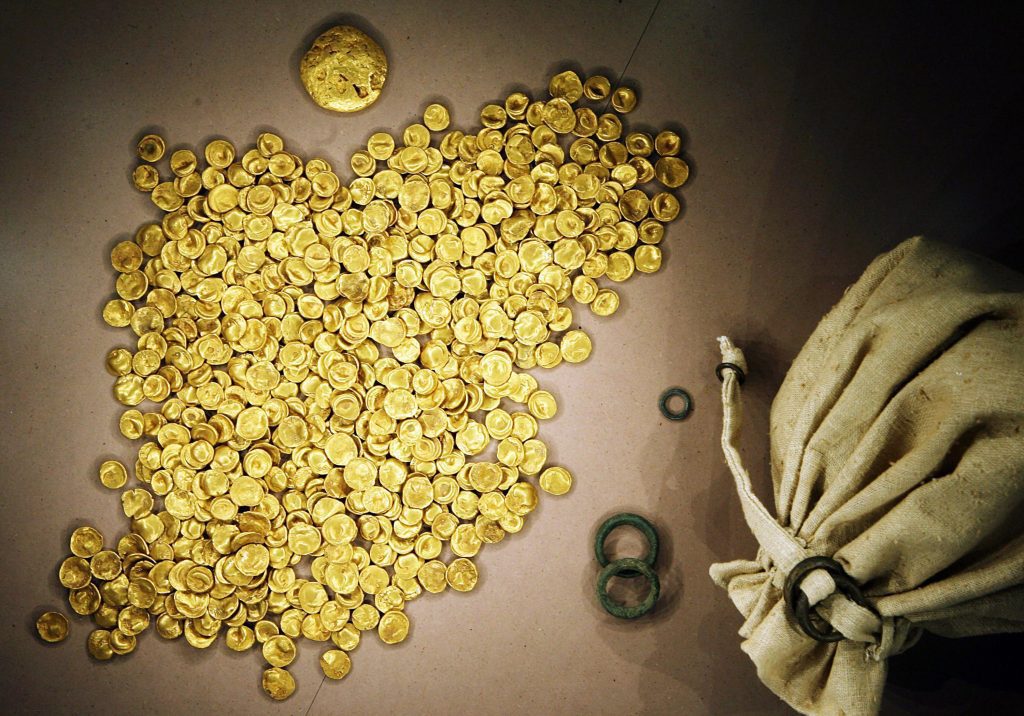BERLIN (AP) — Thieves who broke into a museum in southern Germany and stole hundreds of ancient gold coins were in and out within nine minutes without sounding an alarm, officials said Wednesday, in another sign that the theft was the work of organized criminals.
The police launched an international search for the thieves and their loot, which consisted of 483 Celtic coins and a nugget of unworked gold that were discovered during an archaeological excavation near the present-day town of Manching in 1999.
Guido Lemmer, deputy head of the Bavarian State Criminal Police Office, described how the cables were severed at 1:17 a.m. (0017 GMT) on Tuesday at a communications center one kilometer (less than a mile) from the Celtic and Roman Museum in Manching. , which led to the destruction of communications networks in the region.
Lemmer said the museum’s security systems recorded a door opening at 1:26 a.m., and then how the burglars left again at 1:35 a.m. In those nine minutes, the perpetrators must have smashed open the display cabinet and extracted the treasure.
Lemmer said there were “parallels” between the Manshing robbery and the theft of priceless jewelry in Dresden and a large Berlin gold coin In the last years. Both were blamed on a Berlin-based crime family.
“Whether there is a link we cannot determine,” he added. “Just this much: We’re in contact with colleagues to investigate all possible angles.”
Bavaria’s Minister of Science and Arts, Markus Bloem, said the evidence points to the work of professionals.
“Obviously, you don’t simply go into a museum and take that treasure with you,” he told BR Public Radio. “It is highly secured and as such there is a suspicion that we are rather dealing with an organized crime case.”
However, officials acknowledged that there was no guard at the museum overnight.
The alarm system was considered to provide adequate security, said Robert Gebhard, head of the Bavarian State Archaeological Collection in Munich.
Gebhard said the treasure was of great value to both the local community in Manching and archaeologists across Europe.
He said the bowl-shaped coins, which date to around 100 BC, were made from Bohemian river gold and show how the Celtic settlement of Manching had links across Europe.
Gebhard estimated the treasure’s value at 1.6 million euros ($1.65 million).
“Archaeologists hope the coins will remain in their original condition and reappear at some point,” he said, adding that they are well documented and would be difficult to sell.
“The worst option, meltdown, would mean a complete loss for us,” he said, noting that the physical value of gold itself would only reach about 250,000 euros at current market prices.
Gebhard said that the size of the burial indicated that it may have been “a chief’s war chest”. It was found inside a sack buried under the building’s foundations, and was the largest such find during systematic archaeological excavations in Germany in the 20th century.
Lemmer, the deputy chief of police, said Interpol and Europol had already been alerted about the coin theft, and a 20-strong special investigations unit, dubbed “Ovidum” after the Latin term for the Celtic settlement, had been set up to track down the perpetrators. .

“Unapologetic tv specialist. Hardcore zombie trailblazer. Infuriatingly humble problem solver.”







More Stories
Stand News editors convicted in sedition case
Latest Baysail sinking: Mike Lynch’s wife ‘didn’t want to leave boat without family’ as crew investigated
WFP halts Gaza operations after repeated shooting at aid vehicle